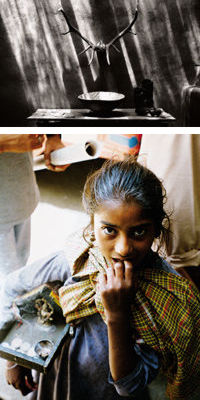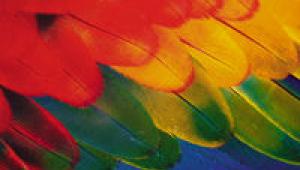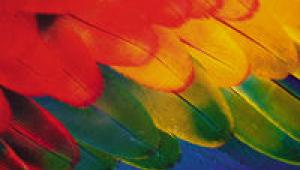10 Fun Self-Assignments Page 2
 6. Frames
6. Frames This assignment is simple: You can add interest to photos of many subjects by framing them with a handy foreground object. A key here is depth of field—you generally want both the frame and the subject to be sharp.
If you look for them, you can find lots of things to use as frames for your photo subjects. Remember to stop down to increase depth of field so that both subject and frame are sharp. Photos by Ron Leach
 7. One Shot From Another
7. One Shot From Another Here's another simple assignment: Take a few of your existing images, and see if you can make better images from them by cropping them. Crop out extraneous matter, turn horizontals into verticals (and vice versa), crop them into long, thin panoramics—you'll likely find you can make some better images by cropping existing ones. Photos by Ron Leach
 8. Shadowy Character
8. Shadowy Character Shadows can be lots of fun. You can use them in photos in two basic ways: as the subject of the image, and to add interest. Strong lighting (direct sun, direct flash) produces the strongest shadows. It's a good idea to bracket exposures when shooting high-contrast shadow images, because they can "fool" exposure meters into under- or overexposing, depending on how much of the scene is highlight and how much is shadow. Photographing shadows will build up your "shadow awareness," which is important in all your photography, because shadows where you don't want them can ruin a picture.
You can use shadows as subjects (top) or to add interest (bottom), or even as special-effects devices (below). Look for them when you're out shooting. Photos by Mike Stensvold
 9. Rise and Shine!
9. Rise and Shine! The big problem with sunrises is that they occur so early. But getting up and afield bright and early can be well worthwhile, for sunrises are the fodder of gorgeous photographs—and you won't find your ideal locations swamped with people. The general sunrise-exposure advice is to meter an area of the sky just to the side of the sun, so that the sun won't affect the reading, but all of these images were exposed per the TTL meter reading of the SLR cameras used to make the shots.
Wide-angle and normal lenses generally work best for sunrise shots, although longer lenses can be effective, too. (Don't look at the sun through a long lens—eye damage will result!). Slow, rich-color films such as Fujichrome Velvia and Kodak Ektachrome E100VS will produce the richest colors, but we've had success with faster films such as Kodachrome 200 and Fujichrome Provia 400, too.
One final tip: Don't forget to check away from the sun for photo possibilities, too—alpenglow on clouds can be beautiful.
Sunrises make great subjects for early-to-rise types. A partly cloudy sky and a reflective surface can add interest. Slow films work best for sunrises, because of their rich colors and fine grain. A tripod can help prevent camera shake. Photos by Mike Stensvold
 10. That Personal Touch
10. That Personal Touch People are the most popular subject matter. And while formal portraits certainly have their place, you can get some great candid shots simply by keeping your eyes open to the folks you encounter in your daily life and travels. So this assignment is simple: Shoot candid portraits of the people you encounter during one day's journeys. You'll have to notice the people you encounter, think about the lighting, and be ready to shoot quickly. It's good practice, and will net you some great images. Top by Jay Jorgensen, bottom by Nannette Freeman
- Log in or register to post comments

















































